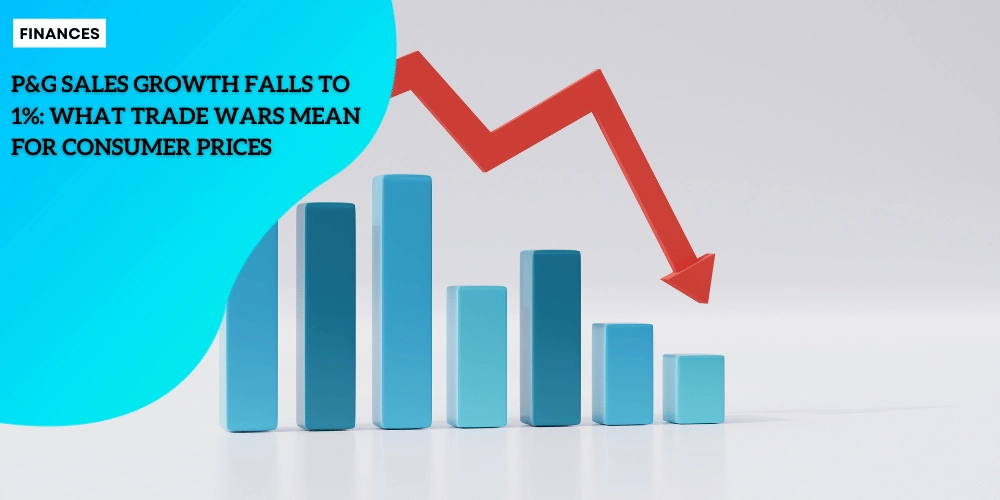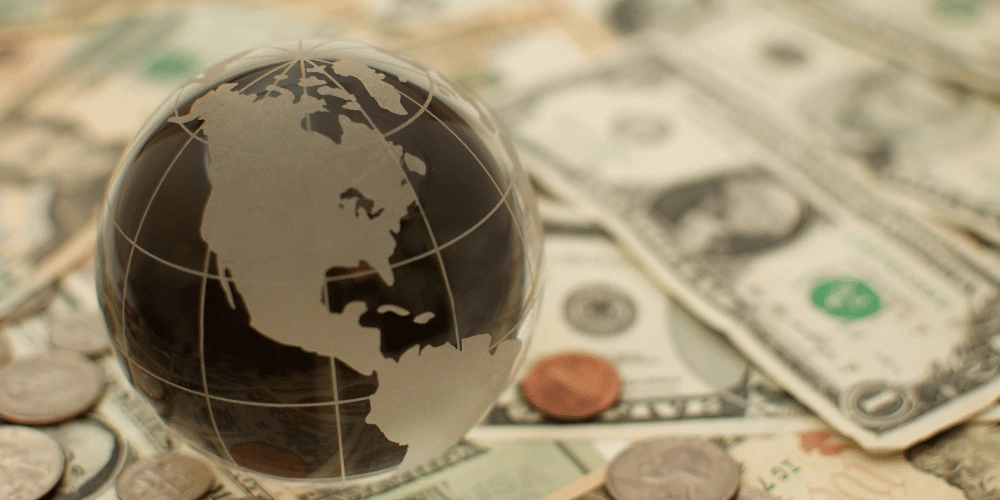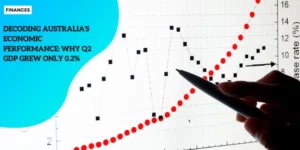P&G Sales Growth Falls to 1%: What Trade Wars Mean for Consumer Prices

Anúncios
P&G’s Recent Financial Performance
Slowdown in Sales and Profit Highlights
Procter & Gamble posted a $3.8 billion profit on $19.8 billion in sales for the first quarter of 2019.
While these numbers show the company remains profitable, the growth behind them tells a different story.
Anúncios
Organic sales—a key metric that strips out the effects of currency changes—climbed only 1%.
This was well below what analysts and the company had hoped for. In response, P&G revised its annual sales growth prediction, lowering it from an originally expected 2-4% down to flat.
Anúncios
Shifting Financial Forecasts
These results are a clear sign of the challenges P&G faces in a changing global economy.
The company pointed to weaker consumer spending in the U.S. and Europe as a main reason for its slowing growth.
Concerns over economic uncertainty have caused shoppers to hold back on everyday purchases, which directly impacts large brands like P&G.
Looking Ahead
Seeing this slowdown has led P&G to reevaluate its outlook for the year.
As the company adapts to these headwinds, attention is turning to how external factors are shaping consumer choices and company results.
Consumer Spending Trends During Trade Tensions
Pullback in Consumer Spending
During the height of recent trade tensions, many consumers in the US and Europe became cautious about their purchases.
Economic uncertainty made people think twice before spending on even routine household items.
As a result, companies like P&G quickly felt the effects on their sales.
For example, P&G’s organic sales growth slowed to just 1%, much lower than what they had anticipated.
This slowdown is tied closely to reduced consumer confidence, as people worry about the direction of the economy and how it affects their wallets.
The Power of Economic Anxiety
The impact of trade tensions was not only due to tariffs or higher costs.
Instead, it was the anxiety and uncertainty they created that had a more immediate effect on spending.
Households began to tighten budgets, limit non-essential purchases, and even put off regular restocking of staples.
For P&G, this drop in consumer activity meant weaker growth, and it was clear that shoppers’ mood shifts could have just as much impact as the tariffs themselves.
This challenging environment highlights just how quickly consumer confidence can influence sales in the consumer goods industry.

Direct Impact of Tariffs on P&G
Assessing the Cost Burden
For P&G, the immediate cost impact from trade tariffs didn’t seem alarming at first.
In the early stages, tariffs added $100 to $160 million in extra annual costs—a figure that is relatively small compared to the company’s more than $40 billion yearly bill for materials.
But the potential long-term impact is far more serious. If tariffs persist, P&G estimates these costs could balloon to $1-1.5 billion each year, rapidly eating into profits.
Putting the Numbers in Perspective
While $100 million sounds significant, P&G is a global company moving vast amounts of goods.
Still, a sudden $1+ billion jump in expenses is no small challenge, especially as consumer spending becomes more unpredictable.
The company must now manage higher material costs at a time when consumer demand is already under pressure from economic uncertainty.
This financial strain is shaping how P&G thinks about both production and pricing as it adapts to ongoing global shifts.
P&G’s Manufacturing Strategy and Tariff Resilience
Localized Production for Immediate Buffer
P&G produces most of its products in or near the markets where they’re sold.
This approach helped soften the initial blow from new tariffs.
Because their goods don’t cross borders as much as they might with a centralized production strategy, the direct impact of tariffs on P&G’s manufacturing costs was considered “relatively benign,” totaling about $100 to $160 million a year at first—an amount manageable against the company’s huge $40 billion annual material costs.
Insulation—But Not Immunity
While producing locally gives P&G some insulation, it’s not a perfect shield.
If tariffs stick around, the company warns these costs could add up fast, potentially rising to $1-1.5 billion per year.
This shows that even localized production doesn’t fully protect against ongoing global trade tensions.
P&G’s model reduces some immediate pain, but longer-term, it must keep adapting its sourcing and production decisions to weather trade wars and rising costs.
Price Increases on Consumer Products
Tariffs and the Inflationary Effect
P&G leaders have been frank about the reality that tariffs drive up costs.
They call tariffs “inherently inflationary.”
Even though the company makes most products close to where they’re sold, the direct cost impact from tariffs hasn’t gone unnoticed.
While the initial hit was $100-160 million, these additional costs are likely to climb if tariffs stick around for longer periods.
Rethinking Pricing Strategies
Facing increased expenses, P&G is carefully reconsidering how it sets prices.
The company is weighing the need to pass some of these higher costs on to customers against the risk of losing sales during uncertain economic times.
Executives mention that price hikes may become more common for everyday household goods as production costs continue to rise.
The Consumer Impact
For shoppers, the effects could soon show up at the cash register.
Products that people use every day—from cleaning supplies to personal care items—could soon cost more.
These price increases may feel small at first, but they are likely to gradually add up for families, nudging household budgets and routines.
With costs on the rise, P&G is also exploring new sourcing options.
This ongoing evaluation hints at further changes as the company responds to the evolving global trade landscape.
P&G’s Response and Future Strategy
Sourcing Alternatives and Cost Control
With tariffs making materials more expensive, P&G is actively searching for alternative suppliers to keep costs manageable.
The company’s leaders admit that tariffs push up the baseline cost structure, so exploring new sourcing options is a key step.
This includes a review of global supply chains to see where they can find more cost-effective materials or local partners.
Weighing Long-Term Impacts
P&G doesn’t view tariffs as just a short-term hurdle.
Executives are evaluating how continued trade disputes could impact their business over several years.
This analysis includes forecasting future material costs, mapping out possible changes in global trade policies, and identifying risk areas that could hamper steady profits.
Balancing Prices and Consumer Sensitivity
The company knows it can’t just raise prices without consequences.
With shoppers already holding back due to economic worries, P&G is careful about passing along cost increases.
Executives are working to find a middle ground—adjusting prices where needed, but also finding operational efficiencies to soften the blow for consumers.
As P&G navigates these changes, their actions could signal wider shifts for the consumer goods sector.
What This Means for Consumers and Markets
Higher Prices and Household Budgets
Trade tensions are making everyday goods more expensive for consumers.
As tariffs drive up P&G’s material costs, these increases are likely passed onto shoppers at the store.
Items like cleaning products and personal care essentials may see higher price tags, chipping away at household budgets over time.
Even small rises can quickly add up for families who rely on these staples every week.
Retail Ripple Effects
When a major company like P&G adjusts its pricing, the whole retail sector feels it.
Supermarkets and online retailers may need to update shelves and change promotions in response.
Other manufacturers could follow suit, triggering a wave of price hikes on various everyday products throughout the market.
Lasting Impacts on Consumer Choices
As these changes take hold, consumers may start cutting back or switching to more affordable brands.
This could alter spending habits in the long term, especially if economic uncertainty continues.
Brands and retailers will need to pay close attention to how shoppers react, as every price increase is closely scrutinized.
With these challenges reshaping the landscape, companies are forced to rethink how and where they make their products, looking for better ways to manage costs and meet consumers’ needs.






